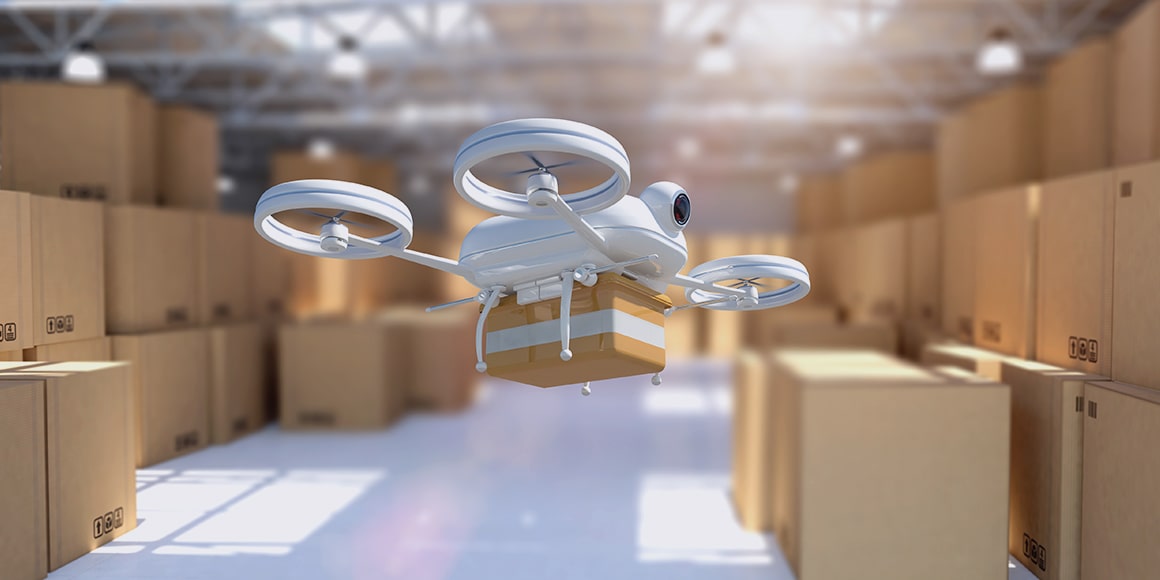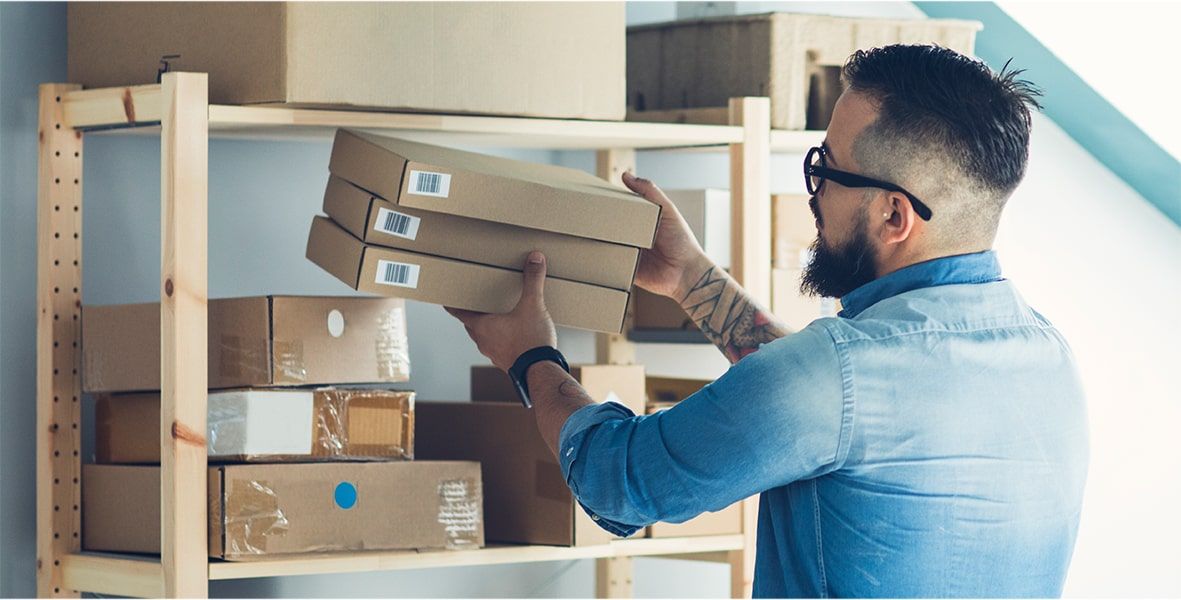
The right tools can help your shipping business run as efficiently as possible. Today, that means integrating artificial intelligence, robotics and the Internet of Things into your day-to-day functions.
Technology is constantly developing new solutions for common hurdles in shipping and logistics—but which ones are worth your investment? Here, we’ll dive into five promising advancements that may improve your fulfillment processes today or in the future.
Warehouse Delivery Drones 1
Flying drones are now being implemented within warehouses to find and deliver inventory.[1] When orders come in through a digital system, a message is communicated to the drone to find and pick an item. The small helicopter-style drone then brings the item to a packing area where a human employee can properly package and label the item for shipping.
These drones find and pick items at a faster and more efficient pace than a human employee. This frees staff up to perform the tasks that only they can do, such as quality control on products and preparing those items for shipment.
Smart Pallets 2
Smart pallets add track-and-trace technology to the basic shipping pallet to improve efficiency and accountability when dealing with bulk shipments. Most look similar to wooden pallets but are made from materials that can withstand multiple shipments.
They are built with radio-frequency identification (RFID) chips inside, which can gather different types of data—such as temperature if you’re shipping perishable goods or impact for delicate items—as well as track distance and location.
This data can help you better understand where issues arise when your items are in transport from your supplier: You’ll see that the pallet sat in a specific location in transit and can figure out how to eliminate that hiccup in the future. The collected data is also helpful in securing insurance for shipments, as the insurance companies get more information to assess claims.
RFID chips are also helpful for locating specific pallets and items within a distribution center.
Inventory Bots 3
These automated bots help monitor stock inventory, allowing human fulfillment workers to focus on picking and packing safely and accurately. Many are designed after pick carts so that they can be easily introduced into a distribution center.
Using LIDAR technology—which stands for light detection and ranging, and measures variable distances and enables autonomous navigation—these bots can locate and move inventory faster and more safely than a person can. They can also spot misplaced items, audit shelves and deliver real-time data on products so that the distribution center always has the right amount of inventory in stock.
Inventory bots allow businesses to better utilize the skills of employees by freeing up their time to focus on specialized tasks. These machines can help you optimize your distribution center, your employee workload and your fulfillment process.
Wireless Sensors and Indoor Location Tracking 4
Better manage what’s happening within your distribution center using sensors. You can set up the sensors throughout the area; by positioning them throughout the room, you’ll get the most accurate reads from triangulated data.
What can these sensors detect? Some monitor the warehouse space, measuring temperature changes, humidity, carbon monoxide and other elements that could affect the working conditions or product quality. Others are more specific, such as flex sensors that measure damage to shelving and suggest repairs or vehicle detection sensors to track when carriers arrive and leave.
Sensors can also communicate with one another. A wireless sensor that lives on a shelf or pallet can talk with those around the building so that you can locate items more easily. Overall, sensors modernize how you manage your distribution center, helping things to run smoothly with less hassle.
Wearable Barcode Readers 5
Optimize performance of your fulfillment staff with these wearable tools. By taking the scanner from a traditional gun to a wearable ring or glove, your employees can use both hands to handle items while still quickly scanning codes.
Items can be simply scanned with one hand and any shipping or product information can be updated using a connected screen that can be worn on the wrist. Without bulky equipment, your employees will move through the distribution center more efficiently and will pick and pack more productively.
Which of the following logistics innovations interests you the most?
Key Takeaway
These technologies are in different stages of entering the market and being able to deliver a positive return on your investment. Some, such as wearable barcode readers and wireless trackers, are readily available and quick to pay for themselves. Others, such as inventory bots and warehouse drones, are still in development and are out of reach for most small businesses.
Decide what you want to optimize first in your distribution center: inventory and picking, tracing and tracking, monitoring your space, or something else. Then, use these priorities to help you find the best technology to further your business.
Footnotes
keyboard_arrow_down- [1]Ian Taylor, “Geodis and Delta Drone Unveil ‘Completely Automatic’ Warehouse Inventory System,” Post and Parcel, April 13, 2018. arrow_right_alt
 search
close
menu
search
close
menu



